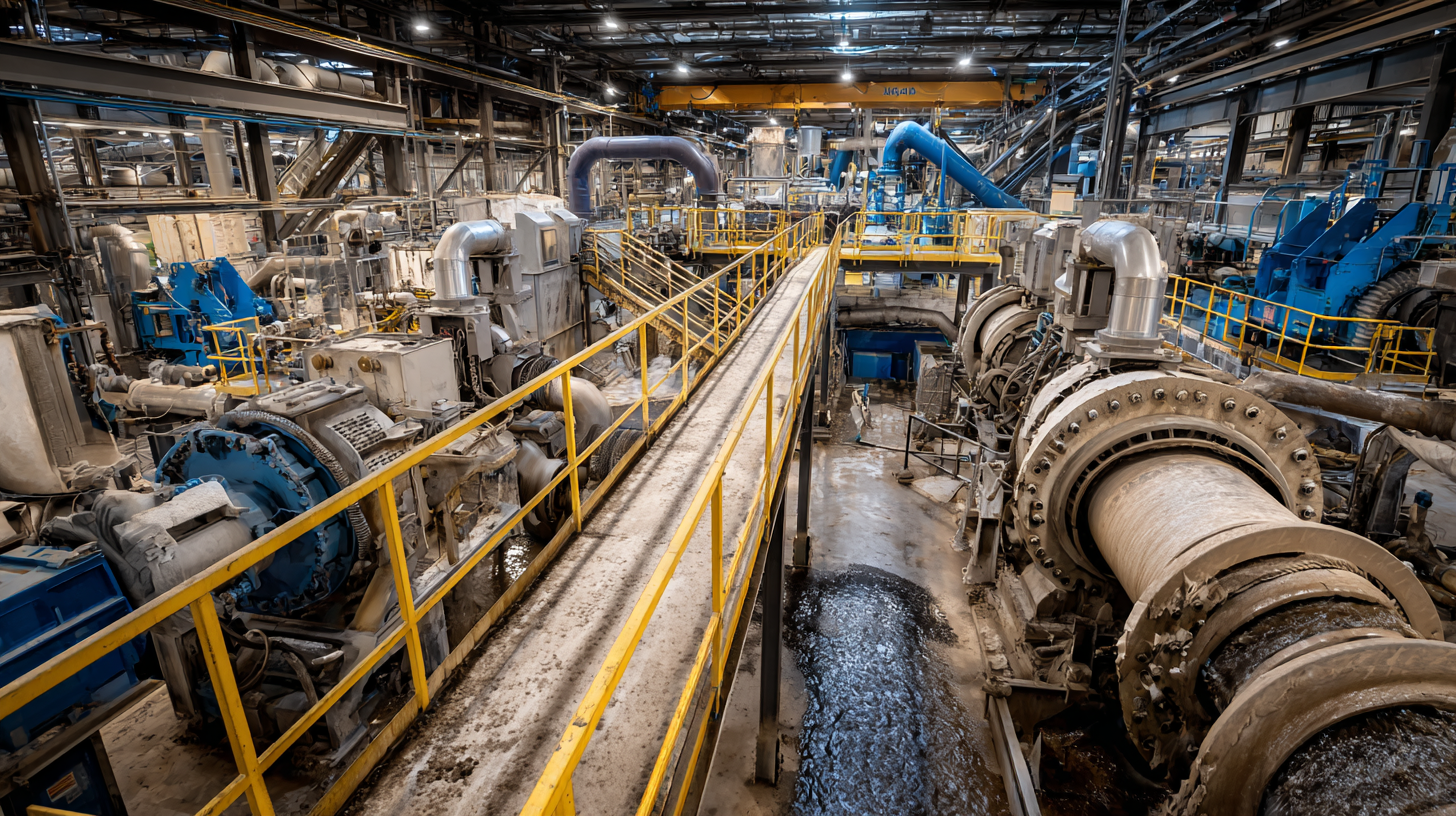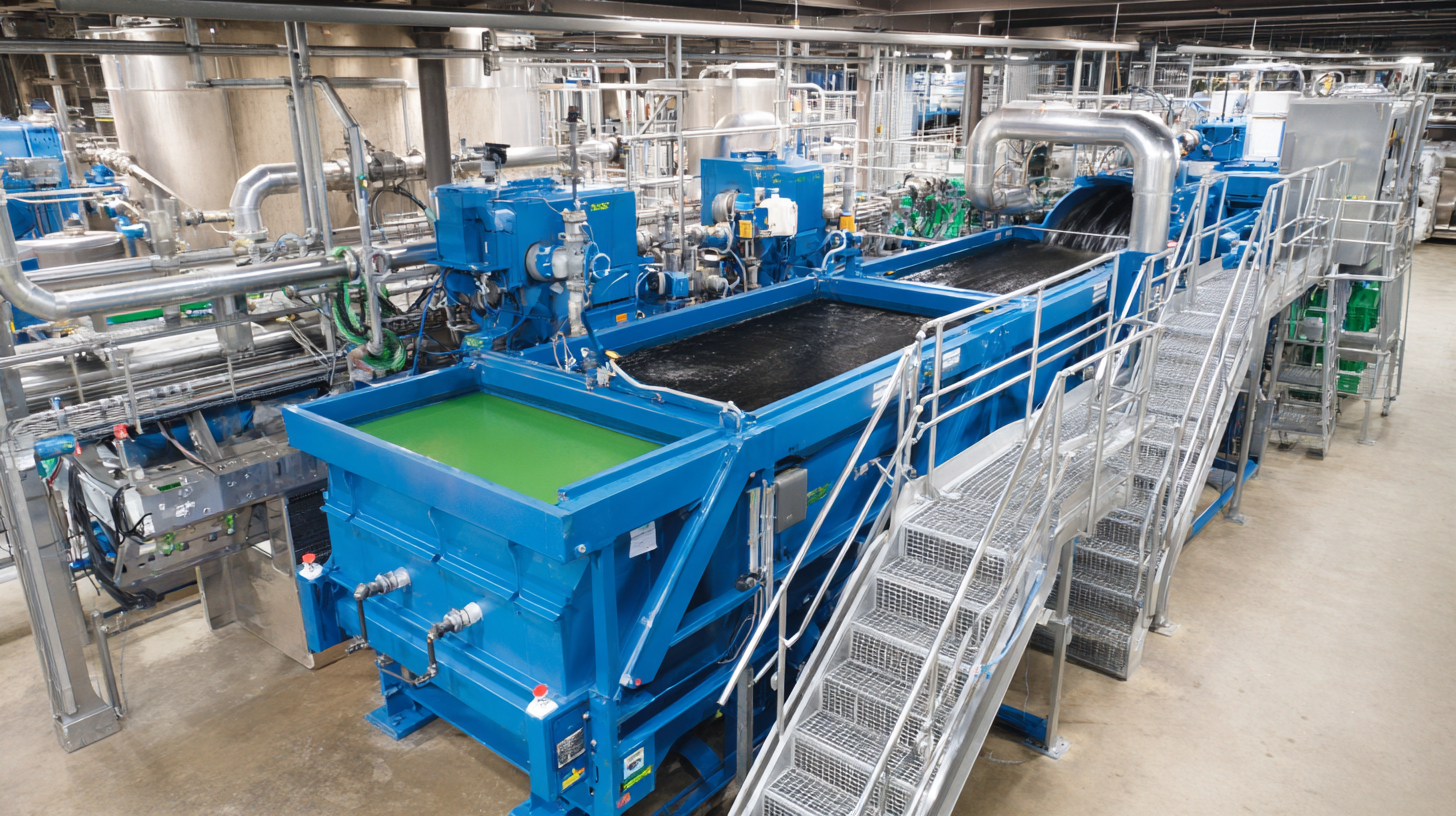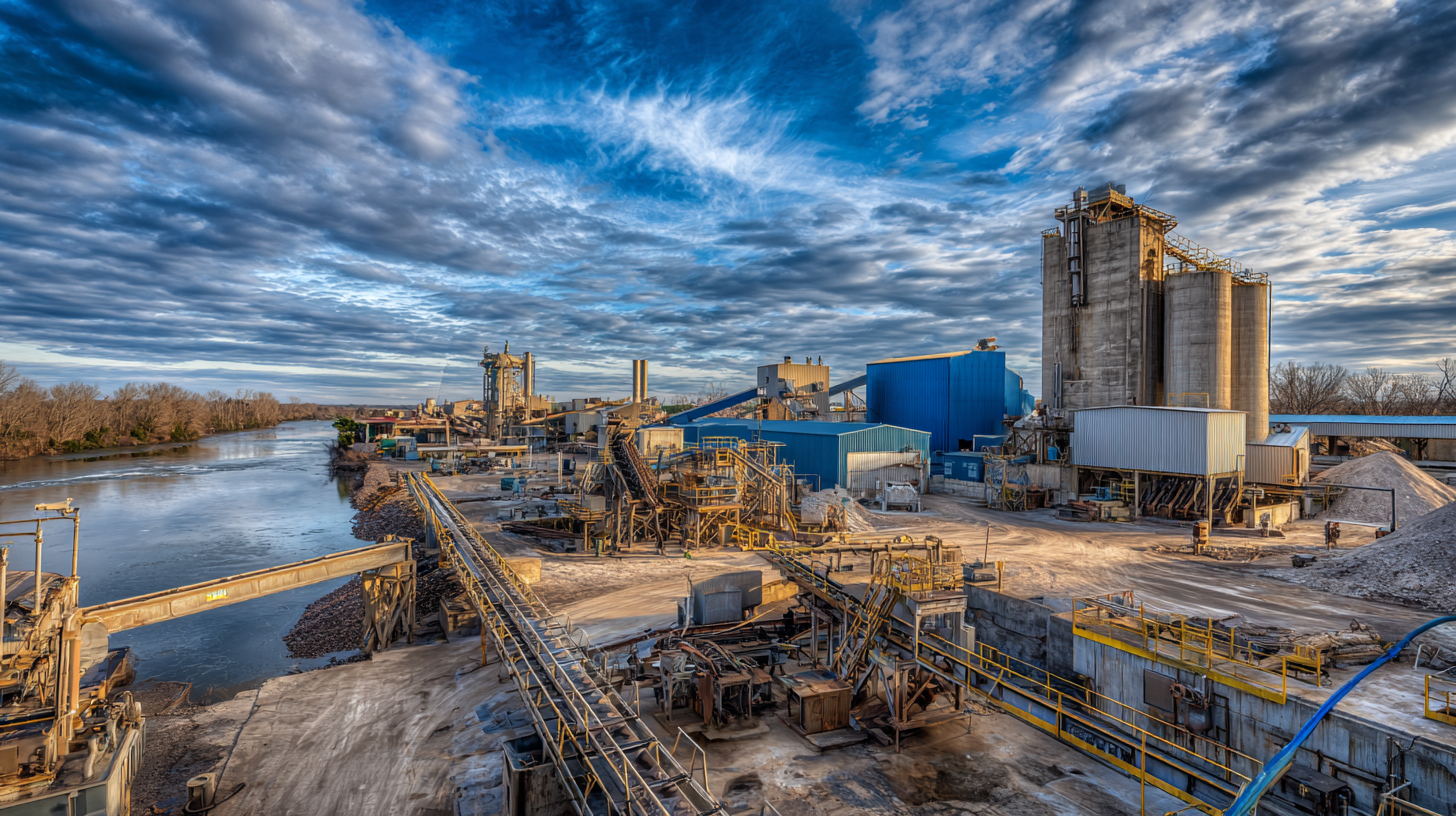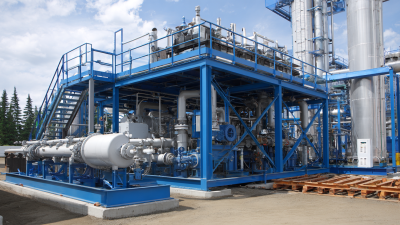

In the oil and gas world, managing sludge is becoming more and more of a big deal, especially with all these strict environmental rules kicking in and the push to recover resources more efficiently. Things like sludge conditioning and dewatering are pretty much at the heart of making sure solids get separated from liquids properly. It’s not just about keeping operations running smoothly — it’s also about doing our part for the environment. A recent industry report pointed out that if sludge isn’t handled right, companies could end up facing costs skyrocket by up to 30%. That’s why it’s so important to stick to the best practices when it comes to sludge treatment. Shangjiang Petroleum Engineering Equipment Co., Ltd. keeps pushing the envelope in separation and filtration tech, especially focusing on improving cyclone separation methods that make sludge conditioning and dewatering better. By adopting these smarter practices, companies can make waste management less of a headache, cut down on environmental harm, and save some serious money on operational costs.

As we get closer to 2025, the world of sludge conditioning and dewatering is changing pretty fast. You know, with everyone pushing for more sustainability and efficiency, it's no surprise that we're seeing some cool new tech popping up. Things like advanced polymers and thermal conditioning are coming into the spotlight—they not only boost how well sludge treatment works but also help cut down on environmental impact. If you jump on these trends now, your wastewater treatment processes could really see some serious improvement.
A little tip: When you're trying out new tech, it’s smart to start with small pilot tests first. That way, you get to see how it works with your existing setup, saving you some time and money in the long run, and making sure it actually does the job you're hoping for.
And on top of that, automation and smart tech are really gaining ground in sludge management. These tools are pretty amazing—they can streamline how things run, give you better monitoring, and even let you tweak things on the fly. Plus, using machine learning algorithms can really help predict sludge behavior and fine-tune the dewatering process, making everything run smoother.
Another little tip: Make sure your team is up to speed with training on these new techs and methods. Keep learning about the latest trends—if your team stays in the loop, they'll be better equipped to handle challenges and make the most of any new tools you bring in.
Handling sludge properly isn’t exactly a walk in the park, especially in the oil and gas industry. A recent report from the World Petroleum Council pointed out that if sludge isn’t treated right, it can cause a pretty big hit—up to 20% loss in production efficiency. That’s a huge deal, which is why choosing the right conditioning and dewatering methods really matters. The tricky part is, there are a bunch of challenges—like out-of-date tech, bad operational habits, and how varied sludge can be—that make figuring out the best treatment options a real headache.
Here at Shanghai Shangjiang Petroleum Engineering Equipment Co., Ltd., we totally get how important it is to tackle these issues head-on. We’re all about pushing the boundaries with the latest separation and filtration tech to help solve these industry problems. Some recent studies show that using advanced cyclone separation tech can boost sludge treatment efficiency by up to 40%. That means lower costs and a smoother overall system. We’re continuously working on innovating and improving our products, so the oil and gas industry has the right tools to manage sludge effectively and keep things running smoothly.
| Challenge | Description | Impact | Possible Solutions |
|---|---|---|---|
| High Energy Consumption | Sludge dewatering processes often require significant energy input, leading to increased operational costs. | Increased operating costs and reduced profitability. | Implementing energy-efficient technologies and exploring renewable energy sources. |
| Skilled Labor Shortage | A lack of trained personnel to manage and maintain advanced sludge treatment systems adversely affects performance. | Increased downtime and maintenance costs, along with reduced efficiency in operations. | Investing in training programs and developing partnerships with educational institutions. |
| Regulatory Compliance | Navigating complex regulations related to waste management and disposal can be challenging. | Potential legal issues and fines, along with reputational damage. | Developing comprehensive compliance strategies and ensuring regular audits. |
| Equipment Reliability | The effectiveness of sludge conditioning and dewatering can be hampered by equipment failures or inefficiencies. | Unscheduled maintenance and disruptions in sludge management operations. | Regular maintenance schedules and investing in high-quality machinery. |
| Public Perception | Negative attitudes towards waste management practices can hinder project acceptance. | Resistance to facility expansions or upgrades due to public objections. | Community engagement and transparent communication about sludge management benefits. |
When it comes to making sludge dewatering more efficient, you can't really ignore how much technology plays a role. Tools like automated systems, real-time monitoring, and data analytics aren’t just fancy buzzwords—they actually give you valuable insights that can really boost performance during sludge conditioning and dewatering. For example, hooking up smart sensors means operators can tweak stuff on the fly, which leads to a much better final product—dried sludge that’s just right.
Here's a little tip: make sure you’re regularly updating your tech setup so you’re always on top of the latest advancements in sludge treatment. Staying current helps your facility stay competitive and ready to handle changing environmental rules.
And don’t forget about using innovative chemical additives—they can really make a difference by changing the properties of the sludge to make filtering easier. Techniques like whirlpool mixing or adding polymers have shown some pretty impressive results, like cutting down energy use and getting drier cake.
A quick tip here: run regular tests to figure out the best chemical amounts for your specific sludge because its makeup can vary quite a bit. Being proactive about this not only helps you save money but also ensures you’re using resources wisely. In the end, all these little adjustments add up to a smoother operation and better results.
When you start digging into advanced sludge conditioning methods, you often find they can really boost how efficient your wastewater treatment plant works. It's like, taking the time to do a proper cost-benefit analysis is super helpful—it allows you to see clearly what each technique will cost versus what you'll save. For instance, comparing the old-school gravity thickening to newer tech like centrifugation or membrane filtration can really highlight not just the differences in operational costs, but also the potential savings on disposal fees and space.

Sure, going for energy-efficient systems might mean coughing up more money upfront, but in the long run, you'll probably see benefits like using fewer chemicals and cutting down on energy bills—that kinda stuff adds up over time.
And let’s not forget, the environmental side of things is just as important. These advanced sludge treatments usually produce better quality effluent and leave less residual waste behind, making it easier to stay in line with regulatory standards. If you factor in sustainability goals along with the financials, it makes the decision a lot clearer—you’re balancing the books while also being responsible about the planet.
All in all, investing in these newer methods might actually make good financial sense in the end, and it’s a smart move for both operational performance and environmental responsibility down the line.
 Getting effective sludge conditioning and dewatering right is honestly pretty challenging for wastewater treatment plants. There are a bunch of hurdles, like sludge that keeps changing in composition, equipment breaking down, and sometimes operators just not being fully trained. The Water Environment Federation (WEF) actually says that about 60% of these facilities face issues with inconsistent sludge feed stuff, which can make the whole process less efficient and even bump up costs. So, doing regular sampling and analysis of the sludge can really help smooth things out and improve the treatment overall.
Getting effective sludge conditioning and dewatering right is honestly pretty challenging for wastewater treatment plants. There are a bunch of hurdles, like sludge that keeps changing in composition, equipment breaking down, and sometimes operators just not being fully trained. The Water Environment Federation (WEF) actually says that about 60% of these facilities face issues with inconsistent sludge feed stuff, which can make the whole process less efficient and even bump up costs. So, doing regular sampling and analysis of the sludge can really help smooth things out and improve the treatment overall.
On top of that, adopting advanced tech like automated controls and real-time monitoring can make a huge difference. The EPA reports that plants using automation see up to 30% fewer operational failures compared to those that do everything manually. Plus, investing in proper training for staff really pays off—better handling of dewatering equipment means better performance and less downtime. It’s also key to meet regulatory standards and keep things running smoothly. All these little improvements add up, making sludge management more sustainable in the long run.
The future of sludge conditioning and dewatering is changing pretty fast, mostly because there's a real push for more sustainable waste management. Recently, in China, they've kicked off some pretty exciting initiatives that are pushing us towards a new kind of ecological civilization — one that focuses on recovering resources from sludge instead of just dumping it. Technological innovations and new equipment are playing a huge role here, helping us tackle the tricky problem of how to get rid of sludge efficiently and responsibly. Industry reports are saying that the demand for smarter, more advanced sludge treatment solutions is only going up — a clear sign we're moving towards greener, more efficient practices.
You'll notice that cutting-edge tech like improved filtration systems and cyclone separators are becoming more common, making the dewatering process way more effective. Take China's modernized sludge landfills, for example — they've managed to hit waste reduction targets ahead of schedule, setting some pretty high standards. These advances aren’t just about safely disposing of sludge; they're also opening the door to reclaim valuable resources hiding inside it. Of course, companies working on next-gen separation tech are super important for meeting the rising industry needs and helping urban wastewater treatment facilities go green.
As we deal with the ongoing challenges in sludge management, coming up with new ideas and tech innovations is more critical than ever. Continuous research and development into filtration methods is key — it helps us process faster, cut down costs, and ultimately improve how we handle water and waste, aiming for a more sustainable future overall.
: The main challenges include inadequate technologies, poor operational practices, and variability of sludge characteristics, leading to complications in selecting appropriate treatment options.
Inefficient sludge treatment can waste approximately 20% of production efficiency.
Advanced cyclone separation technologies can enhance sludge treatment efficiency by up to 40%.
A cost-benefit analysis evaluates the financial implications of different sludge conditioning techniques, comparing operational costs, potential savings in disposal fees, and space requirements.
While energy-efficient systems may have higher upfront costs, long-term benefits include reduced chemical usage and lower energy consumption, resulting in substantial savings.
Advanced techniques often result in higher quality effluent and less residual waste, contributing to better compliance with regulatory standards.
Incorporating sustainability metrics helps wastewater treatment plants balance economic and environmental outcomes, leading to informed decision-making.
Investing in advanced methods can promote operational effectiveness by improving efficiency in wastewater treatment processes.
The company focuses on developing cutting-edge separation and filtration equipment aimed at addressing key challenges in the industry.
Continuous innovation in product offerings helps equip the oil and gas sector with the necessary tools to implement effective sludge management solutions.






